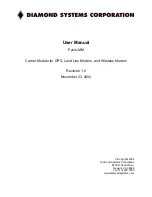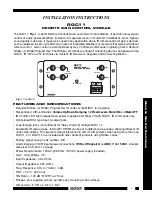
Test Summary
2
Test Summary
through
explains the
, and
2.1
Equipment
2.1.1
Power Supplies
Power supply #1 (PS #1): a power supply capable of supplying 5 V at 1 A is required. While this part can
handle larger voltage and current, it is not necessary for this procedure.
2.1.2
Load #1 (4-Quadrant Supply, Constant Voltage < 4.5 V)
A 0–20 V/0–5 A, > 30-W system, DC electronic load and setting as constant voltage load mode.
or:
Kepco load: BOP 20–5M, DC 0 to ±20 V, 0 to ±5 A (or higher).
or:
Real single-cell battery.
2.1.3
Load #2 – Use with Boost Mode
PMID to GND load, 10
Ω
, 5 W or greater.
2.1.4
Meters
Six Fluke 75 multimeters, (equivalent or better).
or:
Four equivalent voltage meters and two equivalent current meters.
The current meters must be capable of measuring 5 A+ current.
2.1.5
Computer
A computer with at least one USB port and a USB cable. The Battery Management Studio (bqStudio)
(
) must be properly installed.
2.1.6
USB-to-GPIO Communication Kit (EV2300 or EV2400 - USB Interface Adapter)
2.1.7
Software
Download the bqStudio software and double-click on the file. Follow the installation steps. The software
supports the Microsoft
®
Windows
®
XP and Windows 7 operating systems.
Microsoft, Windows are registered trademarks of Microsoft Corporation.
4
bq24296M and bq24298 EVM (PWR655) User’s Guide
SLUUB62A – August 2014 – Revised March 2015
Copyright © 2014–2015, Texas Instruments Incorporated





































